Worried about your kids getting hurt while playing outdoors, and wondering—is artificial grass good for play area safety? Artificial turf, first created in 1964 as Chemgrass (later Astroturf), has come a long way with improved cushioning to lower the risk of injuries.
This blog post shares 9 key insights from 2025 to help you decide if synthetic grass is safe and right for your family’s play space. Keep reading for answers that matter most to parents like you.
Key Takeaways
Modern artificial grass—with proper padding—meets ASTM safety standards, letting kids safely fall from higher places without injury.
A Yale study found 92 chemicals in tire crumb artificial turf, with 20% considered carcinogenic—so safety concerns do exist.
High-quality artificial lawns easily last 15–20 years, cutting yearly yard costs by $1,600 to $3,300 compared to real grass.
Synthetic turf surfaces can hit over 150°F on hot sunny days—but new cooling tech now cuts heat by up to 50 degrees.
By 2025, artificial grass will use safer, eco-friendly materials—like antimicrobial treatments and non-toxic parts—to meet tough REACH standards.
Table of Contents
Safety of Artificial Grass for Play Areas
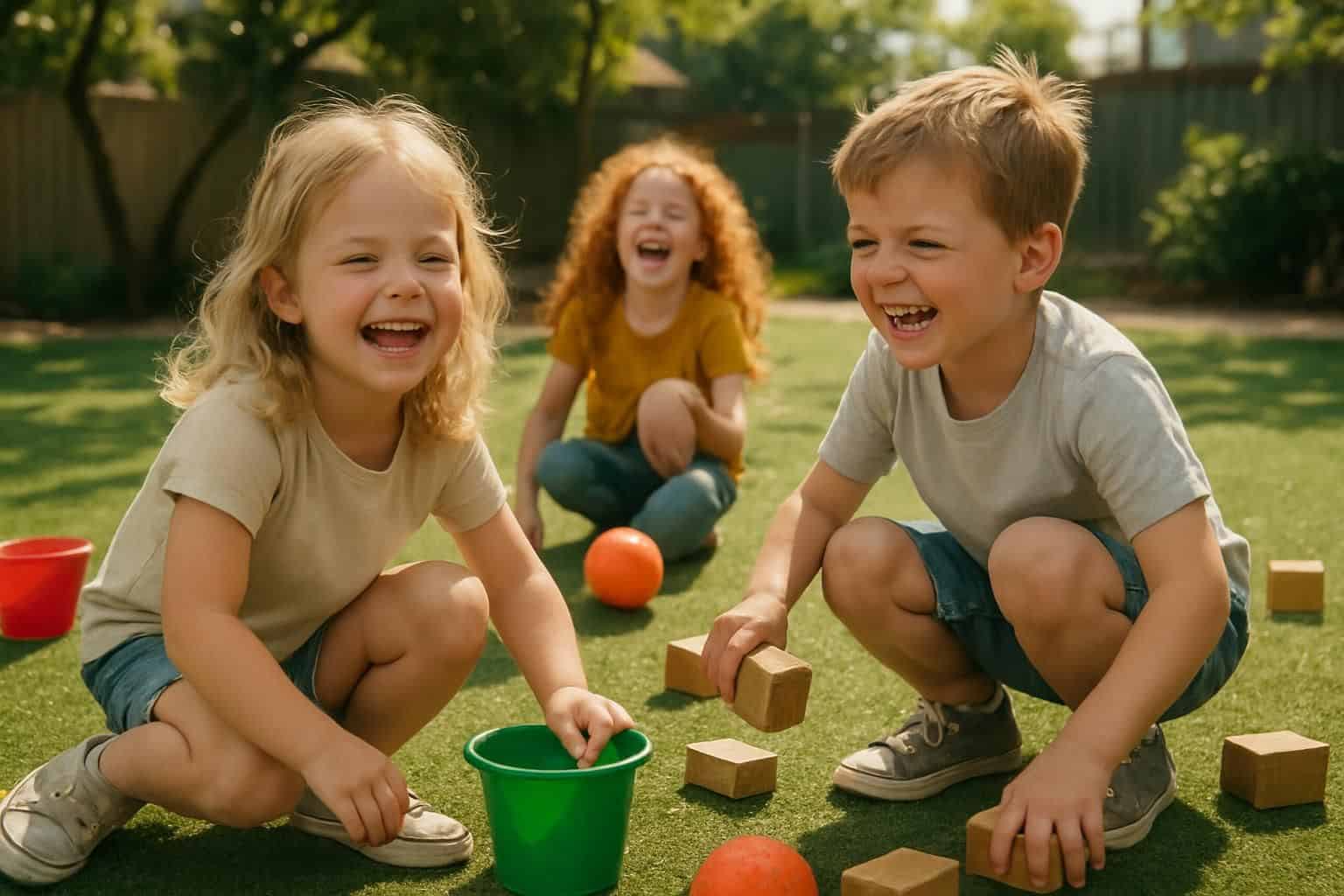
Artificial grass offers a soft landing zone that can reduce injuries from falls on play areas. Modern synthetic turf meets strict safety standards while being free from harmful chemicals that might affect kids with skin sensitivities.
Does artificial grass provide a safe surface for falls?
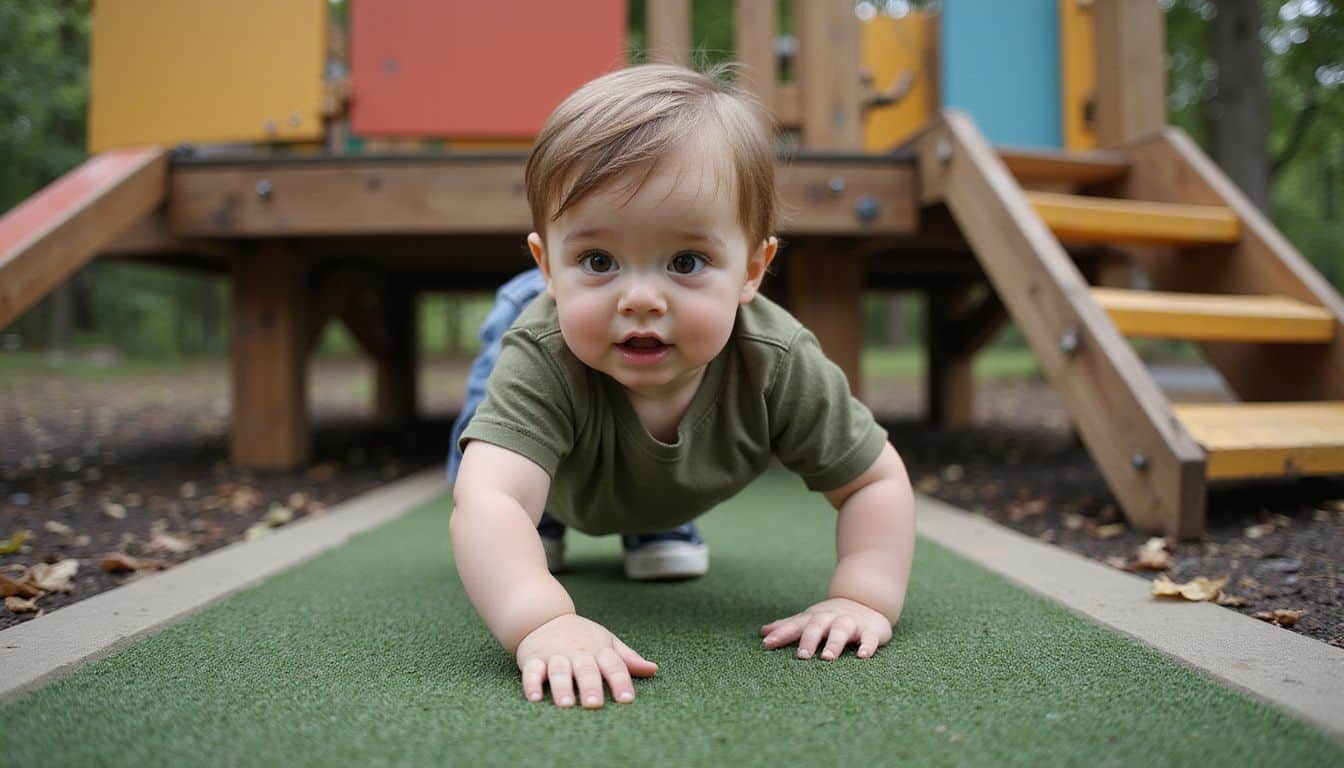
Proper padding under artificial grass helps kids stay safer during falls. Tests prove playground padding boosts turf safety—raising what’s called the Critical Fall Height. That means kids can fall farther without major injury risk.
Fall Height Tests confirm if surfaces meet official playground guidelines.
Safety is our top priority when installing artificial turf in play areas, says Artificial Turf in Seattle, WA. The right padding system can make all the difference.
Yet, turf quality varies widely. A 2019 study showed over 20% of 52 turf fields in Washington, D.C., failed surface hardness tests. Hardness makes a big difference in keeping children safe on the playground.
Softer surfaces cushion falls better, reducing head injury risks. For playgrounds, choose turf with shock pads or rubber infill, certified to ASTM safety standards.
Is artificial grass safe for kids with sensitive skin?

Artificial grass gives kids with sensitive skin a safer place to play. Today’s synthetic turf is usually non-toxic—made without harsh chemicals, which can irritate young skin. Most artificial grass made in the USA meets strict safety rules, is lead-free, and child-safe.
Many parents even find their kids getting fewer skin issues on artificial grass—no pollen, fewer allergens, fewer bug bites.
Kids can run around freely without itchy rashes, something natural grass often causes. A quick rinse every now and then keeps artificial turf clean and comfortable for sensitive skin.
Plus, its smooth, even surface reduces scrapes and cuts—no hidden rocks or sharp sticks. Parents should check for ASTM-certified products, meeting playground safety standards. Quality artificial grass uses soft yarn fibers, gentle on skin, yet tough enough to handle active kids playing all day.
Does artificial grass contain toxic chemicals?

Many synthetic grass products include chemicals that can harm kids. Researchers have found risky substances like phthalates, PAHs, VOCs, and heavy metals in fake turf. A Yale University report from 2018 found 92 chemicals hiding in tire crumbs and rubber mulch surfaces—20% could cause cancer.
Even as far back as 2007, California’s Office of Environmental Health Hazard Assessment spotted harmful PAHs in tire-based playground surfaces. These discoveries naturally worry parents thinking about playground options.
Most artificial grass uses recycled rubber from about 290 million tires thrown out in the US every year; 12% of those tires end up as surfaces for sports fields and playgrounds.
Benefits of Artificial Grass for Play Areas
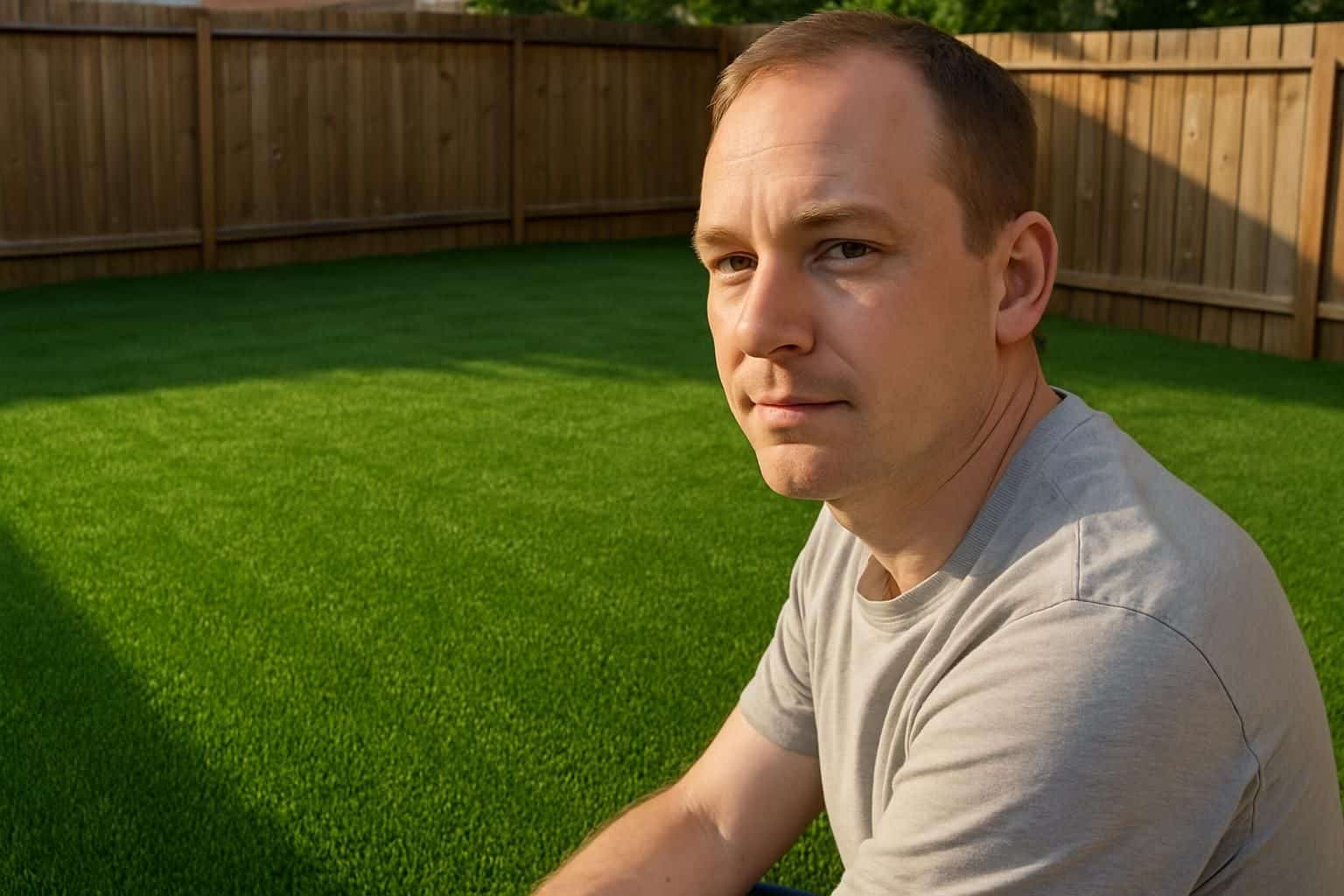
Artificial grass transforms play areas into worry-free zones where kids can run and jump all year round. Modern synthetic turf offers a soft landing surface that needs no mowing, stays green without watering, and won’t turn into mud puddles after rain.
Low maintenance
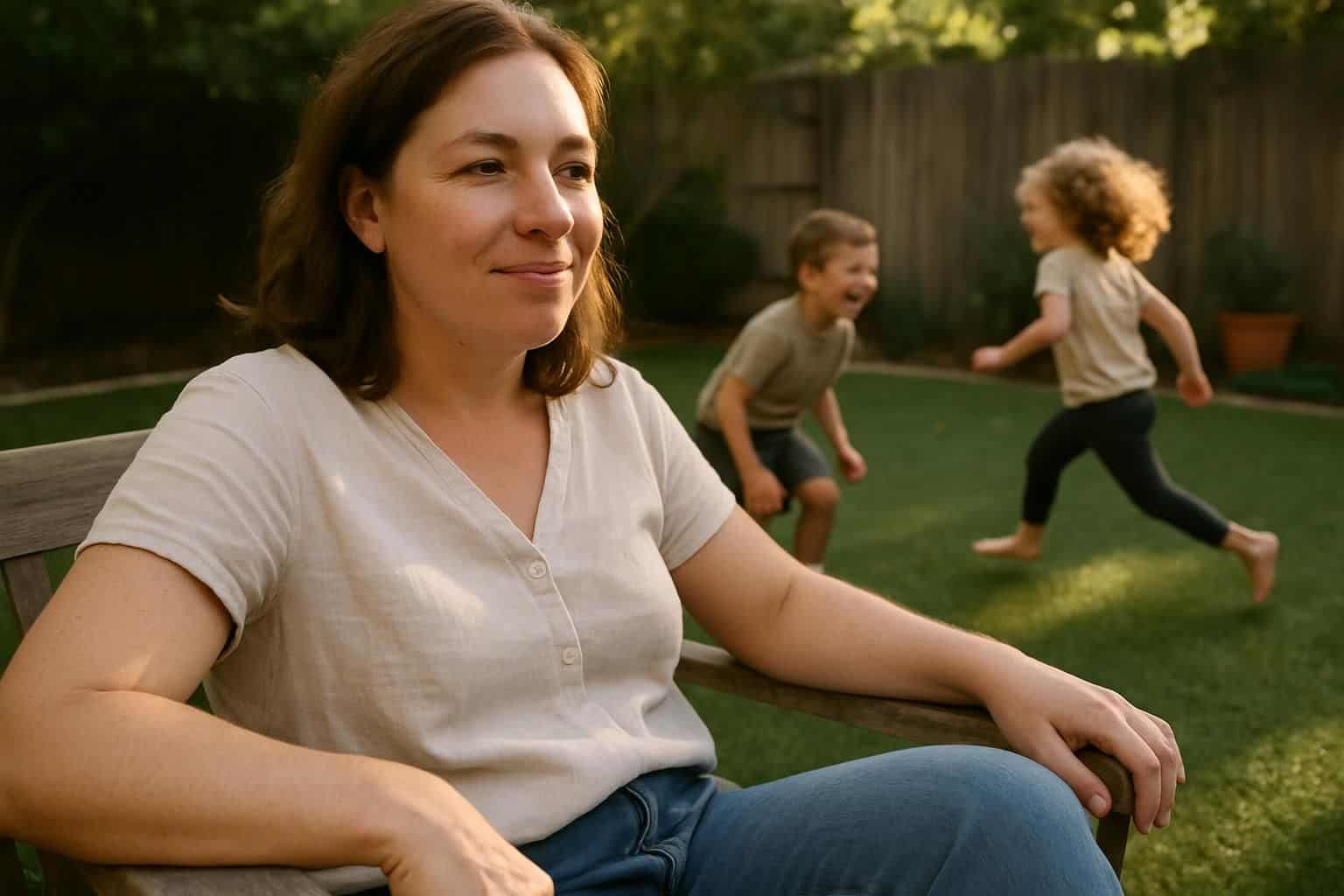
Busy moms save tons of time and energy with artificial grass—no mowing, watering, or fertilizing needed! The play area stays green and neat, without the weekly chores natural grass requires.
Its built-in drainage stops muddy puddles after rain, letting kids back outside fast. This means less muddy laundry and fewer dirty footprints inside your home.
The freedom from lawn care is like getting a gift of time every weekend.
Good quality turf lasts 15–20 years with simple upkeep—just rinse occasionally, and brush fibers to keep them upright. Many moms love using that extra time for family game ideas instead of yard chores.
The EPDM rubber infill stays put better than wood mulch, keeping play spots safe and clean all year.
Durability and longevity
Artificial grass easily handles heavy play for 15-20 years—with minimal wear. Kids can run, jump, and play daily without causing bare spots or mud puddles. Its durable fibers easily withstand constant foot traffic, sports, or playground equipment.
Most good-quality turf products come with warranties of 8-10 years, but with proper care, they’ll usually last much longer.
This durability saves money in the long run. There’s no need to resod damaged patches or fix areas worn down by frequent play. The surface remains smooth and safe, cutting down risks of trips or falls common on natural grass.
A consistent surface matters greatly in areas where kids play and safety is key. Artificial grass also holds up well in every kind of weather—rain or shine.
All-weather usability
Synthetic grass is always ready—rain or shine. Kids can head outside right after a downpour, without muddy shoes or clothes. No more canceled playdates because of wet grass! The surface dries fast, keeping its shape through hot summers and cold winters.
Busy moms who need dependable play areas will love artificial turf’s year-round usability.
With built-in drainage, quality turf lets water flow right through, stopping puddles in their tracks. Natural grass gets muddy or dries out—but synthetic turf stays consistent. That means fewer weather delays, giving your family extra outdoor time together, throughout all four seasons.
Allergy-friendly surface
Artificial grass gives allergic kids a worry-free play area. AGL Grass makes hypoallergenic turf, ideal for kids with sensitive skin. Unlike real lawns, artificial surfaces don’t release pollen or hide allergens that cause sneezing and watery eyes.
So, kids can explore, run around, and have fun—without allergy troubles.
Keeping artificial grass clean reduces dust and dirt buildup that could irritate allergies. Modern playground turf uses safe, non-toxic materials, even if your toddler tries tasting it.
Parents can relax a bit, knowing kids play outside safely, without pollen or skin irritation issues. No more cutting outdoor fun short due to grass allergies or high pollen levels!
Concerns About Artificial Grass
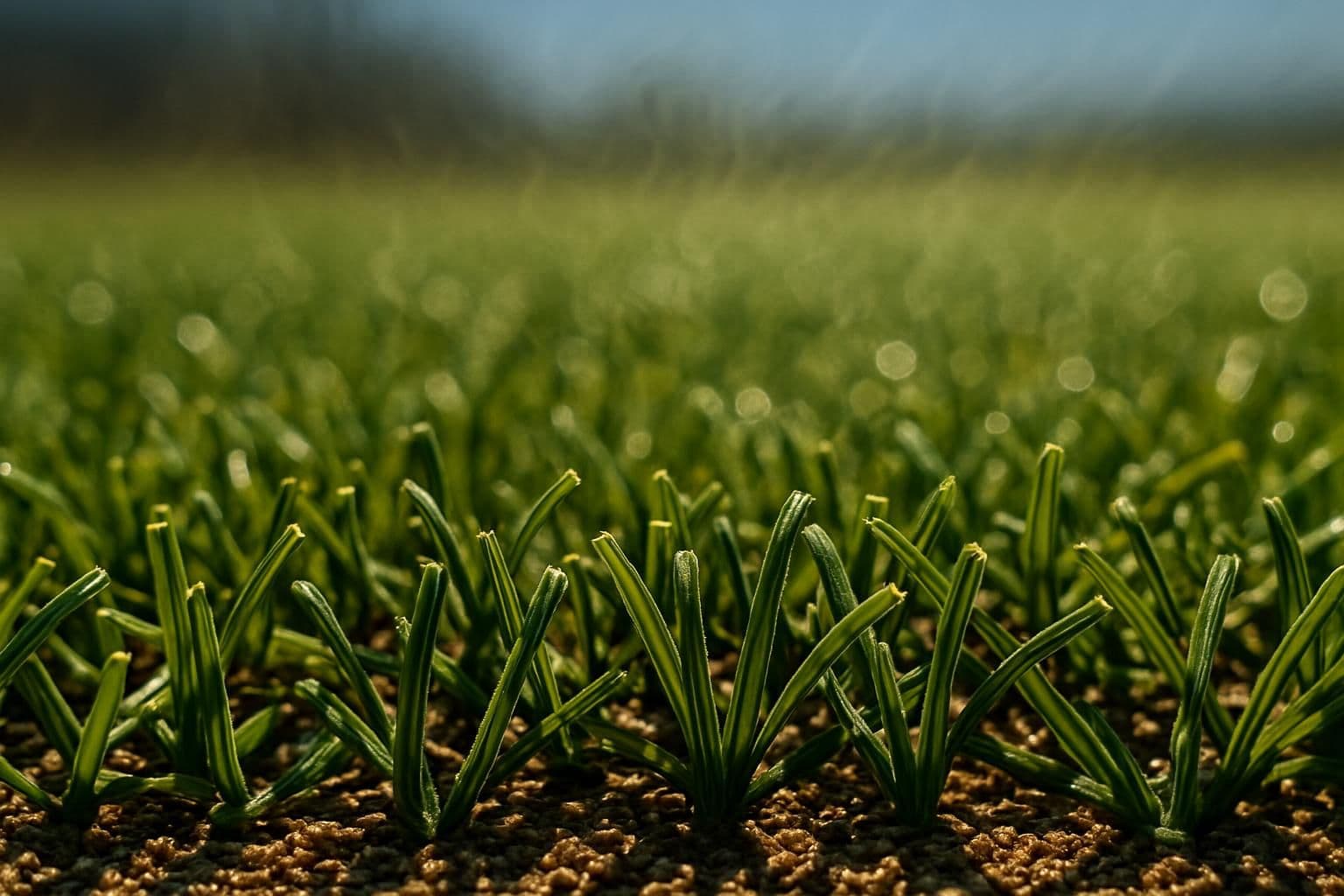
Artificial grass has some real issues that parents need to know about. Heat builds up fast on sunny days, making the surface too hot for bare feet and raising temps in the play area.
Heat retention
Turf surfaces can turn dangerously hot—especially on sunny days. Synthetic grass can easily rise above 150°F, which puts kids at risk. This intense heat happens because synthetic materials absorb sunlight, rather than reflect it like real grass.
But here’s the good news… newer turf products now offer a safer, cooler solution. High-quality options use special cooling technology built right in. Coated sand and thermoplastic elastomers—common infill materials—can lower surface temperatures by as much as 50 degrees.
Smart planning makes a difference too. Shade trees, pergolas, or canopies create cool areas for kids to play safely. Some families even set up basic sprinkler systems, spraying water to quickly cool the turf on hot afternoons.
Potential environmental impact
Artificial grass causes major waste issues. Each artificial field dumps around 3 tons of loose fill into soil and water every year. Plastic blades won’t break down in landfills—where old turf usually ends up after only about 8 years.
They quickly become microplastics, harming wildlife and entering our food supply. These synthetic materials also contain harmful chemicals—like PFAS, lead, and cadmium—that seep into groundwater.
The environmental cost of artificial turf is paid long after the playing field is gone – in our water, soil, and even the air we breathe.
Recent bans in Connecticut, Massachusetts, and Vermont highlight rising worries over this issue. Fake grass heats up play spaces, creating hotter conditions than real grass. Natural lawns soak up carbon dioxide and offer homes to beneficial insects—synthetic fields just don’t do that.
Even before arriving at your yard, artificial grass production involves petroleum and creates pollution.
Abrasions and injuries
Eco-issues aside, artificial turf raises real safety worries—especially physical injuries. Kids get turf burns way more often on synthetic grass than natural surfaces. Studies clearly show these abrasions tend to be more severe too.
Foot and ankle injuries also spike on synthetic fields. In fact, a 2019 study revealed troubling stats: out of 52 fields tested in Washington, D.C., more than 20% failed hardness safety checks.
Harder fields mean higher chances of kids falling and getting hurt. Scrapes and cuts are common from sharp synthetic blades or bits of rubber crumb infill material. Even the Consumer Product Safety Commission mentions these concerns in reports on playground surfaces.
Comparing Artificial Grass to Natural Grass
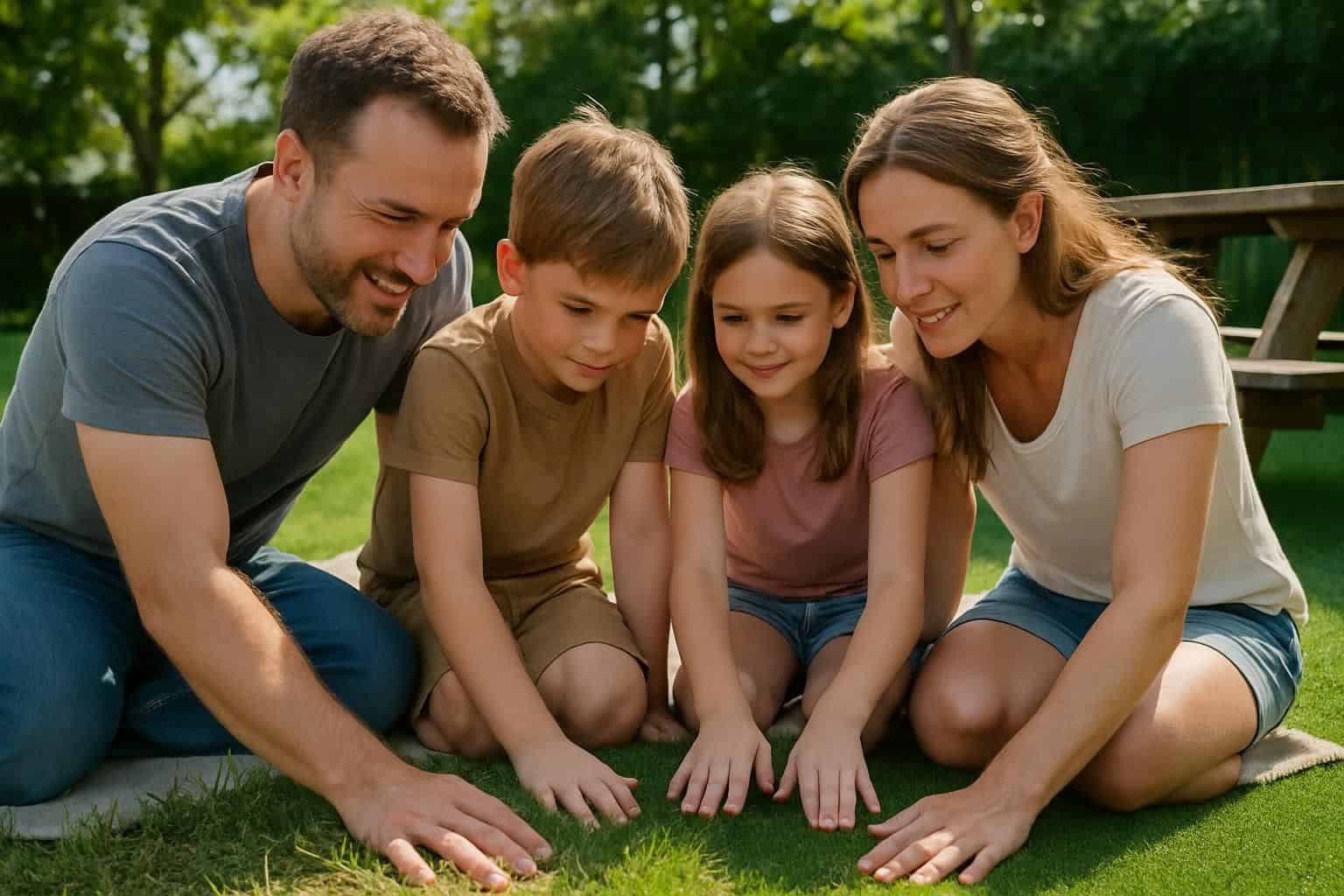
Artificial grass beats natural grass in cost over time, with no need for watering, mowing, or sodding. Natural grass needs more work but feels cooler in summer and won’t cause scrapes like some synthetic surfaces can.
Cost-effectiveness
For busy moms, artificial grass can be a real time and money saver. Installation costs range from about $2,500 to $10,000 upfront—but the convenience pays off over time. Sure, natural grass seems cheap at first, priced between 5 and 25 cents per square foot to install.
But then, there’s upkeep.
Synthetic grass needs very little each year—just around $250 to $350 in total. No more lawn mowing, watering, or spreading fertilizer. Natural lawns, on the other hand, quickly rack up much higher yearly expenses.
Over 20 years, artificial turf totals about $20,000. That covers setup, materials, and routine care—all included. Plus, no weekends spent pushing a mower or battling brown spots during drought periods.
Today’s playground surfaces hold up well year-round, looking great while keeping kids safe.
Natural grass has completely different care needs—and that’s worth thinking about next.
Maintenance requirements
Artificial grass saves you serious yard work—and lots of cash too. Natural lawns can cost $1,600 to $3,300 each year, on mowing, watering, and lawn treatments. With artificial turf, upkeep is simple—just some brushing, to evenly spread the infill granules, and an occasional quick cleaning.
Say goodbye to weekend mowing and endless weed removal. Moms get extra time to relax and play with their kids, instead of pushing a lawnmower.
With good care, artificial turf can easily last 8-10 years—or even longer—in play areas. Regular brushing helps blades stand upright, keeping the lawn looking fresh. A quick rinse removes dust and pollen, helping kids who have asthma or allergies breathe easier.
Now think about costs—artificial grass stacks up pretty well against a natural lawn.
Safety for kids and pets
Synthetic grass gives kids and pets a safer area to play than real grass. Quality turf made in the USA—lead-free and tested carefully—meets strict safety standards. If kids fall, fewer injuries happen, thanks to built-in shock-absorbing layers.
Pets stay cleaner too, since there’s no mud or dirt tracking into your house.
The turf’s smart drainage keeps puddles and slippery spots away, reducing accidents. Lots of moms notice their children get fewer scrapes and cuts after switching to artificial grass.
Plus, no pesticides or fertilizers—much better for toddlers and pets who love putting stuff in their mouths. Good turf brands follow clear ASTM guidelines to keep kids safe.
Tips for Enhancing Artificial Grass Play Areas
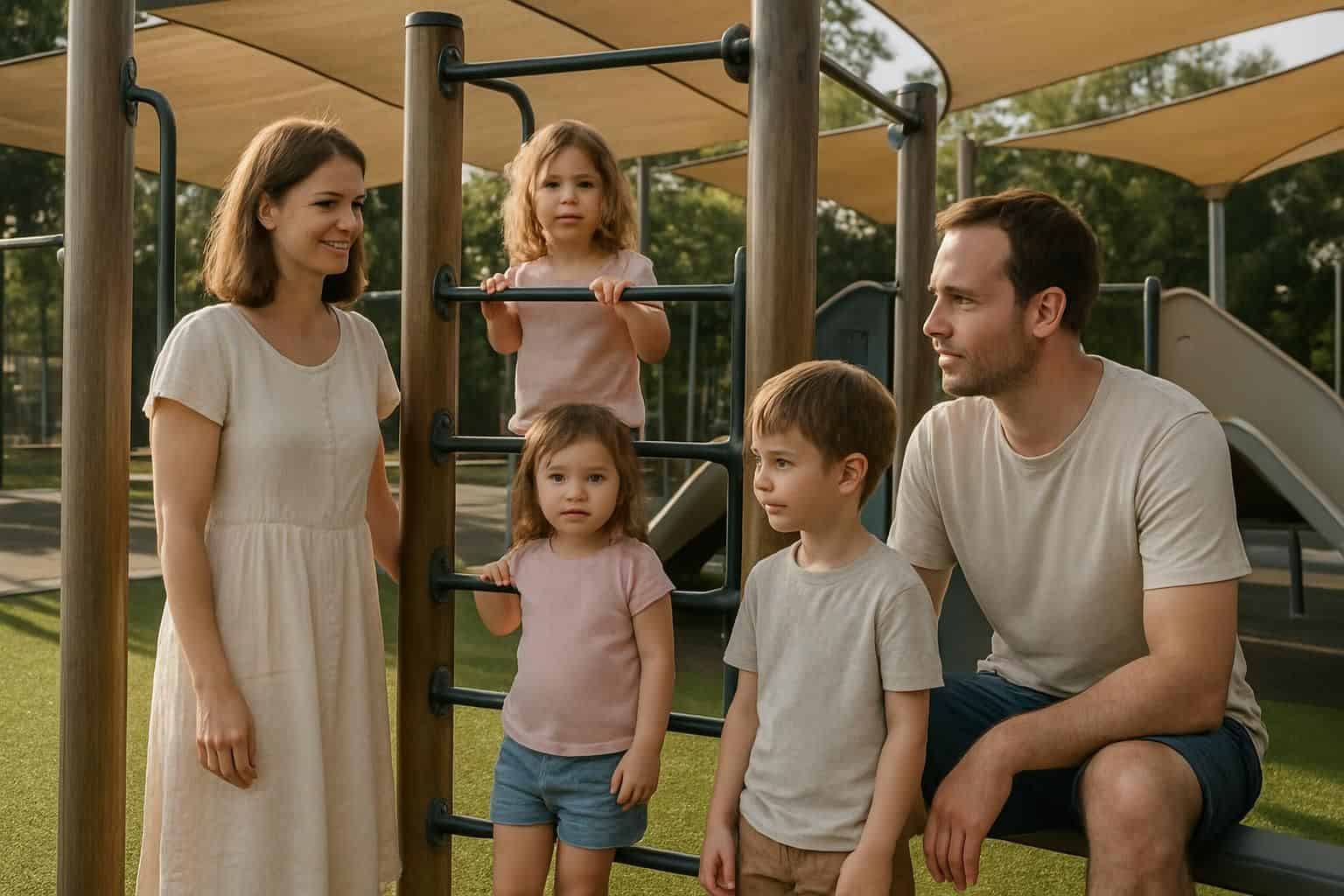
Boost your play area’s fun factor with smart add-ons like climbing frames, shade sails for hot days, and a simple cleaning plan – read on to learn how these easy upgrades can make your artificial grass space safer and more exciting for kids in 2025.
Add play equipment
Smart play equipment easily turns your artificial grass into a kid-friendly zone. Swings, slides, climbing frames—all work really well with synthetic turf. The surface is soft, giving kids a safer landing area, which helps a lot, since around 70% of playground injuries involve falls.
Make sure you choose items that meet safety standards set by the American Society for Testing and Materials, just to keep everyone protected.
Artificial turf easily holds heavy playground gear without damage. Plus, it’s non-toxic and cleaner—it doesn’t soak up the harmful stuff that might come from other materials. Plenty of commercial playgrounds use turf and play equipment together—it just makes sense.
That extra padding underneath helps keep kids safer than hard paving stones or regular grass. Kids can play outside even after rain, minus all that mud tracked indoors—keeping things simple for you.
Incorporate shade structures
Play equipment brings extra fun to your artificial grass play space. Adding shade structures—like umbrellas, pergolas, or even trees—makes the area even better. On hot days, these shaded spots become cool havens for kids.
Shade can lower grass surface temperatures by 20 to 30 degrees, safer and easier for little feet.
Shade also protects children and the grass itself from harmful UV rays. Kids get to play longer without worries about sunburn. Your grass benefits too, since shade stops UV damage that weakens the fibers or causes fading.
Many shade choices today come in lively colors, brightening your yard while offering essential safety. Some fabric canopies even block up to 98% of UV rays, letting just enough natural light through.
Regular cleaning and upkeep
Keeping your artificial grass clean helps kids stay safe while playing. Just rinse it weekly with low-pressure water—that clears away dust, dirt, and tiny bits that make the turf slippery.
If you notice stains, spot-clean them quickly using mild soap and a soft brush. Disinfect surfaces kids touch often with a child-safe spray to stop germs from spreading and making anyone sick.
Seasonal care matters, too. In fall—clear off fallen leaves and sticks, they could cause trips and falls. During hot summers, watch out for areas that get extra warm to the touch; hot spots might burn sensitive skin.
A good routine protects kids and your turf investment at the same time.
Safety guidelines also cover artificial grass setups.
Are There Safety Standards for Artificial Grass?
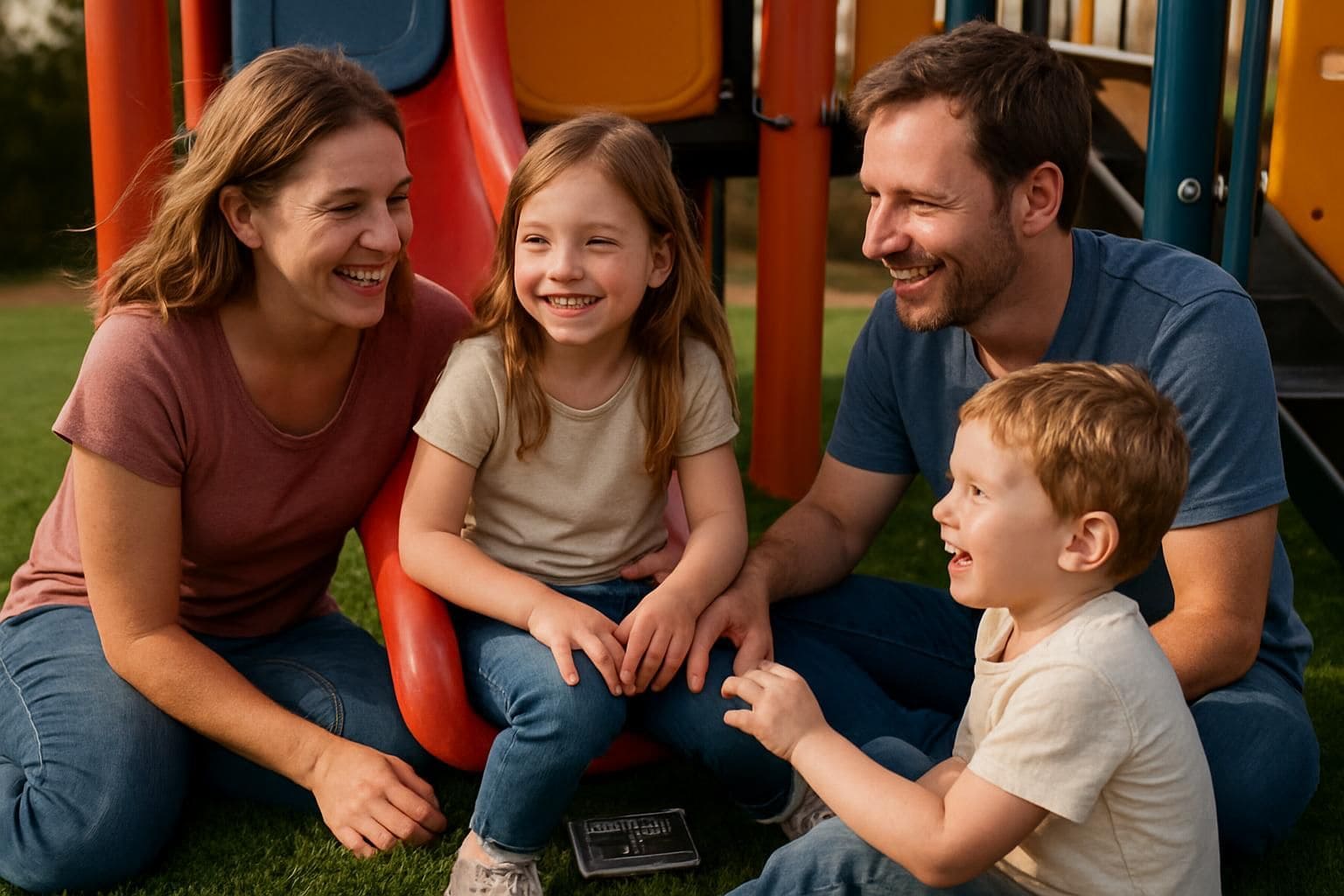
Absolutely! Play area artificial grass has to follow strict safety guidelines. In the U.S., synthetic turf must meet rules banning lead and other harmful substances. ASTM International has standards for playground surfaces—they include impact testing to make sure kids stay safe if they fall from equipment.
Impact tests measure if the artificial grass can soften a child’s fall. Safe turf choices now use non-toxic infill instead of crumb rubber—that stuff has raised health worries before.
Today, many brands offer PFAS-free turf, keeping away those problematic “forever chemicals”. Plus, the Consumer Product Safety Commission keeps an eye on artificial grass products, ensuring they meet child safety rules.
Most playground turf comes labeled with safety certifications. Independent labs test products for UV protection, flame resistance, and harmful chemicals. The safest artificial grass for play has soft blades—no skin irritation or scrapes during playtime.
Companies also have to clearly reveal materials used in their turf under REACH guidelines. That openness lets parents easily pick safe products—it protects kids from chemicals and gives them a tough play spot they can count on.
How to Choose the Best Artificial Grass for Play Areas
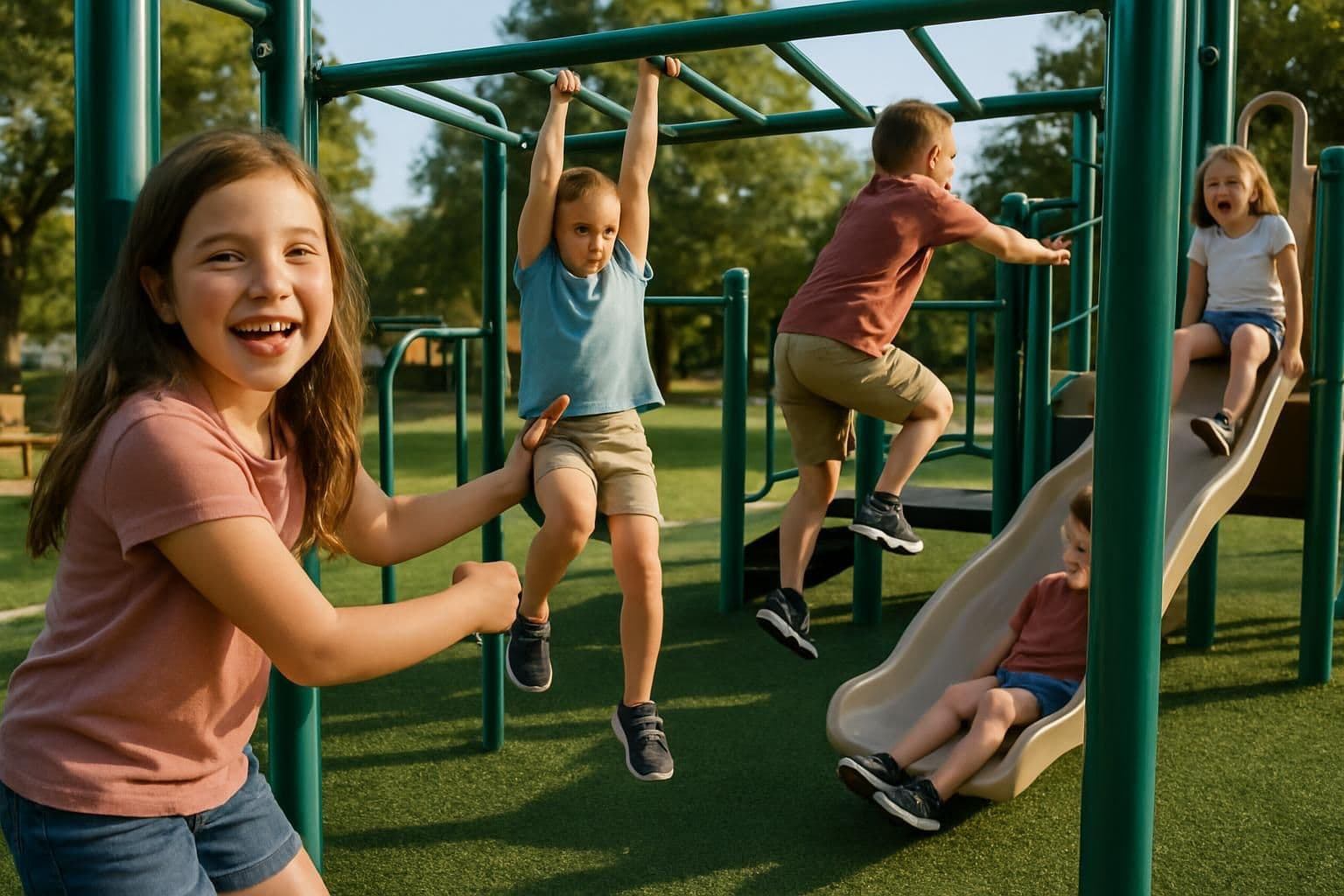
Picking the right turf for your kids’ play space means checking safety ratings and grass quality first. Look for options with proper padding that meets ASTM safety standards, and ask about PFAS-free materials to avoid harmful chemicals.
Understand your needs
Your family’s play style matters most in choosing artificial grass. Kids need safe surfaces that meet U.S. Consumer Product Safety Commission standards for fall zones. Think about how busy your yard gets—areas with lots of activity need turf that’s dense and heavy (higher face weight), so it holds up longer.
Measure carefully to know exactly how much grass you’ll need—it helps in budgeting too. For yards with climbing gear, go for shorter turf—with pile heights 1.25 inches or less—for safer landings.
Also, consider your yard’s drainage; wet spots might need turf with better water runoff.
The key is matching grass type to your family’s needs and safety concerns. Compare yarn fibers to find the right fit for how your family plays.
Compare features and specifications
Pay attention to pile height and face weight when picking artificial grass. Ideal playground turf has a pile height under 30mm, with a face weight of at least 70 ounces per square yard.
These details keep the surface soft and durable—perfect for active kids. Material counts too. Top-quality playground turf usually features polyethylene, which has a natural feel but also handles heavy play well.
Also, look for turf with antibacterial properties. It stops mold and bacteria growth, making the space clean and safe. Many parents appreciate that extra peace of mind. Turf specs affect heat handling too.
Some brands use cooling technology to keep surfaces comfortable, even on sunny, hot days. This helps protect small bare feet during summer playtime.
Look for certified, child-safe products
Always choose artificial grass with proper safety certifications for your kids’ play area. Reliable brands, like AGL Grass, meet tough playground standards and ADA rules for child safety.
Always read labels carefully—go for ones clearly marked “lead-free” and “non-toxic”. And look out for turf tested for dangerous chemicals, such as PFAS and flame retardants.
Good playground turf goes through strict tests for falls and skin safety. The safest synthetic grasses avoid harmful substances, lowering the chance of allergic reactions. Many suppliers now create play-area grasses with softer fibers and extra padding.
These features cut down on injuries—and keep your backyard looking good all year.
How Will Artificial Grass for Play Areas Change in 2025?
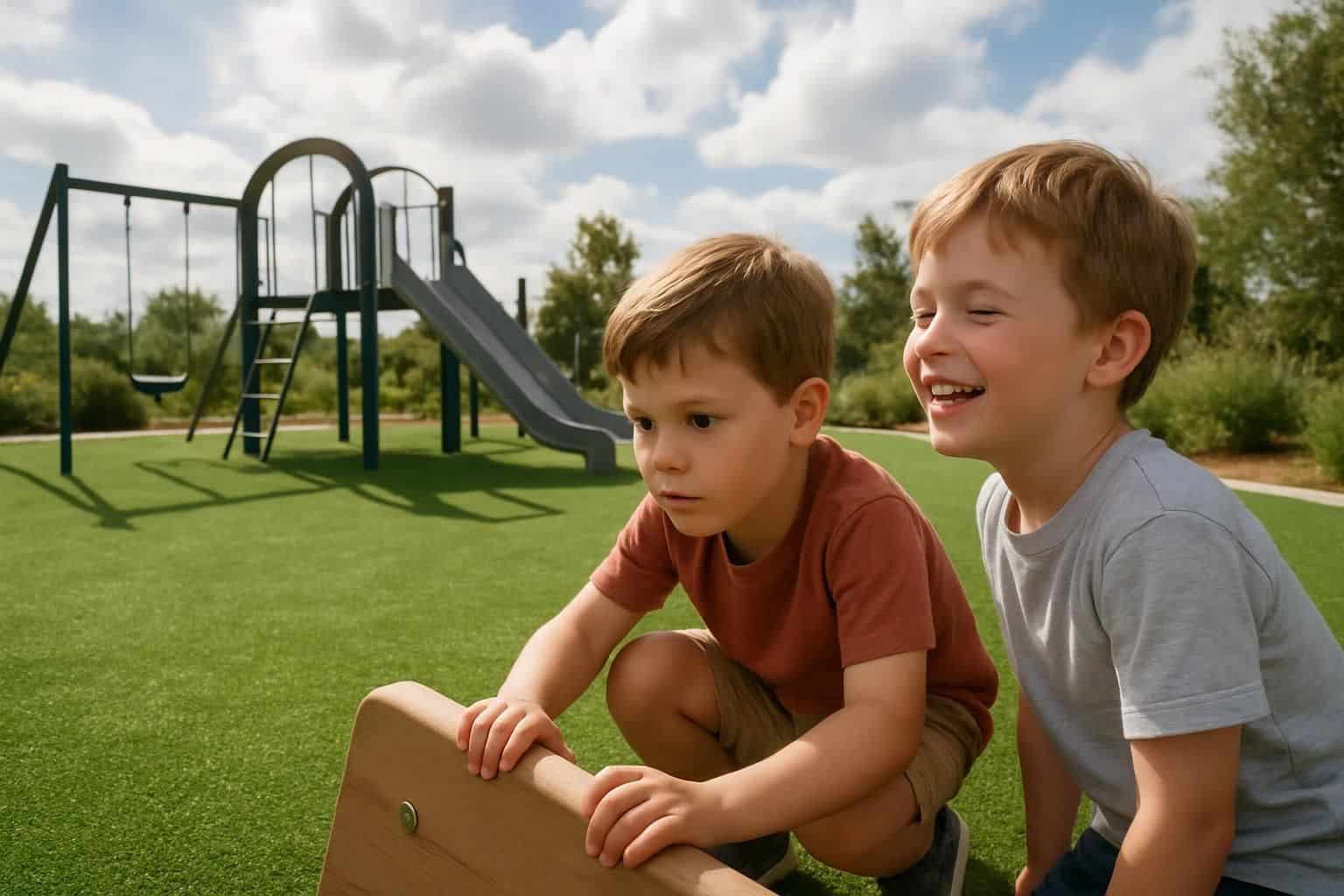
Artificial grass is getting a big upgrade by 2025. New materials will lower greenhouse gases and cut microplastics—both good news for the environment. Safety experts now caution about recycled rubber infill, since it raises chemical exposure risks for kids.
The newest turf will stay cooler on hot days, fixing that common problem of surfaces getting dangerously hot. Kids will enjoy surfaces specially tested for safety, meeting strict impact force standards.
You’ll also start seeing more antimicrobial additives in artificial grass to prevent bacteria and reduce pet odors—a real advantage if you’ve got pets at home. These updates keep turf safer and cleaner for everyone.
Agencies like ATSDR have already pushed for tighter limits on harmful chemicals in playground materials. Manufacturers now emphasize non-toxic materials, fully compliant with Europe’s strict REACH regulations.
This means your kids avoid risky chemicals such as PFAS and polycyclic aromatic hydrocarbons. Plus, the new grass options offer better durability, more realistic colors, and a natural look overall.
People Also Ask
What safety issues come up with artificial grass in play areas?
Artificial grass raises worries about lead exposure, toxic chemicals, and heat build-up. The crumb-rubber infill includes polycyclic aromatic hydrocarbons (PAHs) and endocrine disruptors, which may harm children’s health.
Does artificial grass have harmful materials?
Yes. Synthetic grass often contains recycled tire materials with chemicals like SVOCs, chromium, and PFAS. The Agency for Toxic Substances and Disease Registry noted these substances might increase cancer risks.
How does artificial grass manage heat compared to natural surfaces?
Artificial grass creates hotter areas, known as heat islands, compared to natural grass. Synthetic materials absorb heat from sunlight without natural cooling, making the surface risky for children on hot days.
Does artificial grass help kids with mobility needs?
Synthetic turf offers better wheelchair support than loose materials like wood chips. The flat and even surfaces and mats make movement easier, although some edges might need extra care to avoid tripping hazards.
What’s the environmental impact of installing artificial grass?
Artificial grass doesn’t break down naturally and causes issues with water runoff. Its polypropylene and ethylene propylene diene monomer materials shed microplastics and particles, polluting streams and waterways.
How long does artificial grass stay safe to use on playgrounds?
Synthetic turf usually stays safe for about 8-10 years. After that, loose fibers and pieces emerge, creating risks of choking. As it wears out, particles come off, requiring safety checks according to OEHHA guidelines.
References
https://www.lawnpop.com/why-artificial-grass-is-perfect-for-playgrounds/ (2024-10-30)
https://aglgrass.com/blogs/is-artificial-grass-safe-for-kids/
https://ideal-turf.com/artificial-turf-safety/
https://www.center4research.org/children-athletes-play-toxic-turf-playgrounds/
https://www.ergeon.com/blog/post/artificial-grass-playground
https://www.turfnow.com/resources/blog/five-reasons-artificial-turf-increases-safety-in-play-areas/
https://lawnlove.com/blog/is-artificial-grass-bad-for-the-environment/ (2025-03-26)
https://pubmed.ncbi.nlm.nih.gov/35593739/
https://www.ergeon.com/blog/post/artificial-vs-real-grass-cost
https://ideal-turf.com/turf-sports-field-maintenance/ (2023-12-20)
https://www.synlawn.com/articles/artificial-grass-vs-real-grass/
https://artificialturfexpress.com/blog/discover-hidden-benefits-of-artificial-grass-for-your-home/
https://ideal-turf.com/improve-playground-safety/
https://bendartificialgrass.com/how-to-clean-and-sanitize-artificial-grass-for-playgrounds/
https://ideal-turf.com/best-artificial-grass-for-playgrounds/
https://www.ccgrass.com/how-to-choose-the-best-artificial-grass-for-playground/
